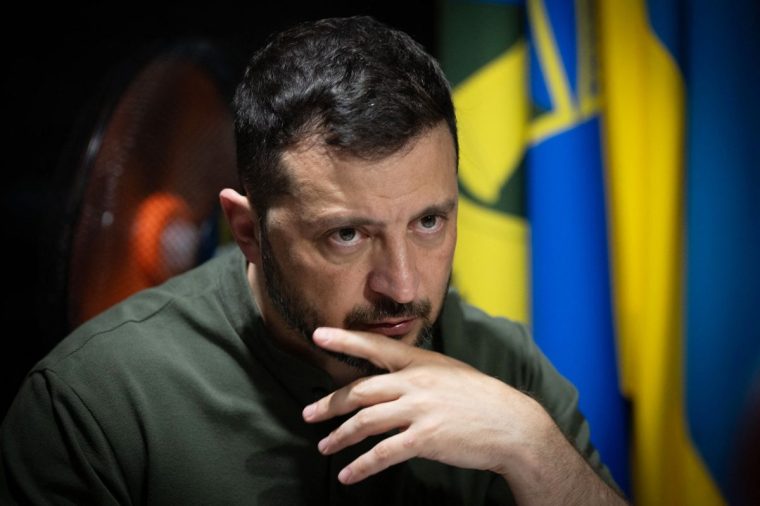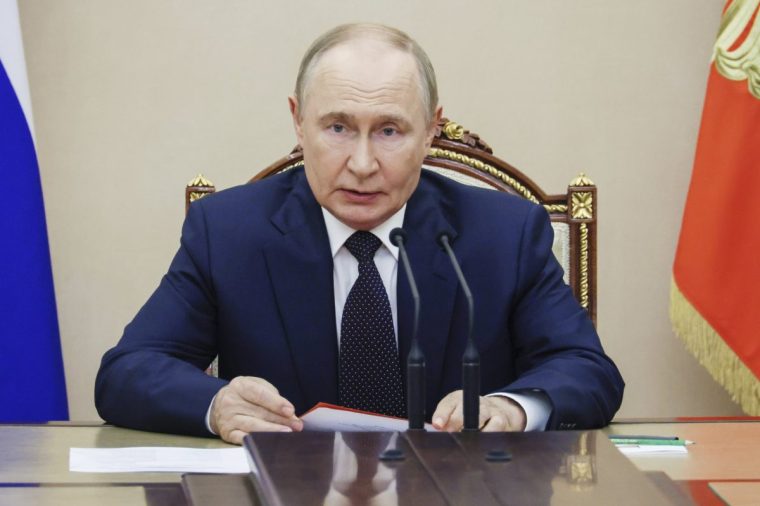Friday is D-day for Ukraine with Russia and the US threatening to carve up the nation
Friday is D-day for Ukraine. Either a decisive outline for a settlement will be achieved at the meeting of Presidents Trump and Putin in Alaska along with a full or partial ceasefire, or the conflict is likely to draw on for yet more months or years.
Donald Trump announced on Monday that he was proposing to “trade real estate” while in Alaska. He would “try to get back” some of Ukraine’s land, particularly valuable “oceanfront property”, he said.
However, he laid into Volodomyr Zelensky, saying he “very severely” disagreed with his handling of the war, for which he appeared to – once again – blame the Ukrainian leader. “I was a little bothered by the fact Zelensky was saying ‘I have to get constitutional approval’,” Trump said. “He’s got approval to go into war and kill everybody? But he needs approval to do a land swap?”
The US President said he would call Zelensky after the meeting if Vladimir Putin proposed a “fair deal”, adding: “I may say, ‘Lots of luck, keep fighting’, or I may say, ‘We can make a deal’,” he said.

Zelensky is expected to join a call with Trump and other European leaders tomorrow, giving him a last chance before Friday’s summit to make his case.
The choice facing the Ukrainians and their redoubtable President is now: What price in terms of the territory, status and the future of their country are they willing to pay for an end to the violence that has terrorised the country for three and a half years?
Russia, Ukraine, Europe and the US – what do they want?
Zelensky has reasserted that he will not give away an inch of Ukrainian territory under the threat of the gun. Moreover, he is demanding strong security guarantees for Ukraine, equivalent to Nato membership. But in reality he has already accepted that Russia will not withdraw from all the territory it holds, if any. All he can do is to withhold formal recognition of this fact. And the prospect of accelerated Nato membership was never real.
For Putin, the meeting offers a chance to somehow slip into a deal many of the original war aims he has been pursuing since February 2022. In addition to international recognition of the annexation of by now five Ukrainian provinces, his campaign is about global status and the standing of Russia vis-à-vis Nato. As part of this campaign, Ukraine is to be neutralised and neutered in terms of its military and political potency in the future.
For the European states, the issue is somewhat broader. They are keen to ensure that Moscow learns the lesson that aggression on the European continent does not pay. More generally, they are committed to the international rule of law, including the cardinal principle that the acquisition of territory by force cannot ever the condoned.

Finally, how about President Trump? Yes, there is that issue of the Nobel Peace Prize. But there is a genuine wish to end what he sees as a massive slaughter that is as needless as it appears endless. He is much less driven by the global world order motivations that impel the Europeans and instead more interested in re-building a mutually beneficial economic relationship with Russia, ideally at the expense of China.
Recognising Territorial Change?
The Kremlin demands “international recognition of the incorporation” of Crimea along with the provinces of Luhansk and Donetsk (the Donbas), all of which have been subjected to armed contestation since 2014, and now also of Zaporizhzhia and Kherson.
Ukraine has signalled that it might accept that these territories have fallen under the control of Moscow as a matter of fact. It has already offered to renounce the use of force as a means of regaining them — if a ceasefire is agreed, this effectively means that they will remain under Russian control forever more. However, Ukraine’s constitution and the views of the population preclude a de jure acceptance of their purported annexation by the Kremlin. But precisely this is what Moscow needs in order to render its conquest permanent and build the fiction that territorial change occurred with the agreement of Ukraine.
A US principles paper, offering to the sides an outline of a “final deal” in late April, sought a compromise. Discussions on territory would start “from the basis of the line of control”.
That means that Russia would retain control over the provinces, but only to the extent that it has actually captured them. Despite the monumental military effort over the past months, Putin’s generals have still not managed fully to occupy the Donbas and Zaporizhzhia and Kherson. Nevertheless, Putin has demanded a surrender of all of their territory.
Obviously, the US could not deliver recognition of Russian conquests by third states, including the Europeans. However, in a rather symbolic move, in April, the White House formally offered its own de jure recognition of the annexation of Crimea.
The Crimea issue is sometimes seen as distinct, as Nikita Khrushchev only transferred the territory from Russia to Ukraine in 1954. As both, Ukraine and Russia, existed under the common roof of the Soviet Union, this was seen as a largely symbolic gesture.
Of course, after the collapse of the USSR, the Russian Federation has recognised the territorial integrity of Ukraine, including Crimea, many times over. The forced annexation by the Kremlin is just as illegal as that of the other captured entities. But this historical background seems to have made it easier for the US to offer its formal acceptance of the annexation of Crimea.

The thinking may be that this will not be an altogether too dangerous precedent that would undermine the international prohibition of the use of force, given the rather unique attitude of the US administration to the international rule of law informed by “great power exceptionalism.” On the other hand, this step would offer something of a concession to Putin’s impossible demand that the peace negotiations have to deliver formal recognition of the incorporation of all five provinces within their pre-existing boundaries by the rest of the world.
Moreover, the US paper of late April foresaw that Moscow might have to give up some territory in the Kherson region — including real estate with an ocean view. Perhaps the plan is to swap this for territory in the Donbas region that has eluded Russian conquest this far. However, in Moscow’s eyes, this area furnishes part of a crucial land bridge and strategic hinterland for its annexation of Crimea – and potentially a further threat directed at Odesa in the future..
Nato and Security Guarantees
President Trump has already confirmed that Ukraine will not become a Nato member. The US proposal accordingly notes that “Ukraine will not seek to join Nato.” Russia is demanding full neutrality for Ukraine, plus a ban on any military activity or presence of third states on its territory, and limitations placed on Ukraine’s own military forces and weaponry.
In the absence of Nato membership, President Zelensky has demanded a US security guarantee akin to Article 5 of the Nato treaty, which promises that an attack on one is an attack on all. This is clearly not what the US is willing to offer to Ukraine.
Instead, a “coalition of the willing” under UK and French leadership has considered the deployment of a deterrent force in Ukraine after a ceasefire or settlement. This is meant to be “backstopped” by the US. But it is clear that Russia would not accept the military presence of European Nato states in Ukraine in any deal. After all, its entire campaign is directed towards pushing Nato away from its borders. And the deployment of a European deterrence force in Ukraine that is not foreseen in a peace agreement would be scarcely possible.
Given present caution by European leaders to avoid the delivery of weapons that could involve them in a direct confrontation with Moscow, it seems unlikely that Europe would commit itself through troops on the ground to the actual defence of Ukraine in a potential hot Third World War with Russia.
According to the Rasmussen/ Yermark formula on security guarantees, Western Europe would commit to doing everything necessary to ensure in the long term that Ukraine can effectively defend itself against any future threat of Western aggression. This would rule out the exclusion of Western military equipment, training and other support for Ukraine demanded by the Kremlin. A technical deployment of military trainers, logisticians and other experts from Nato members might provide some form of trip-wire.
Additional security for Ukraine might be generated as it progresses along its path of EU integration. While not as credible as Nato, the EU now also offers an element of collective security for its members. The US principles for a settlement of April would expressly preserve the prospect of EU membership for Ukraine.
Marc Weller, a Professor in the Department of Politics and International Studies in the University of Cambridge, a former UN Senior Mediation Expert, has advised on dozens of international peace processes.
